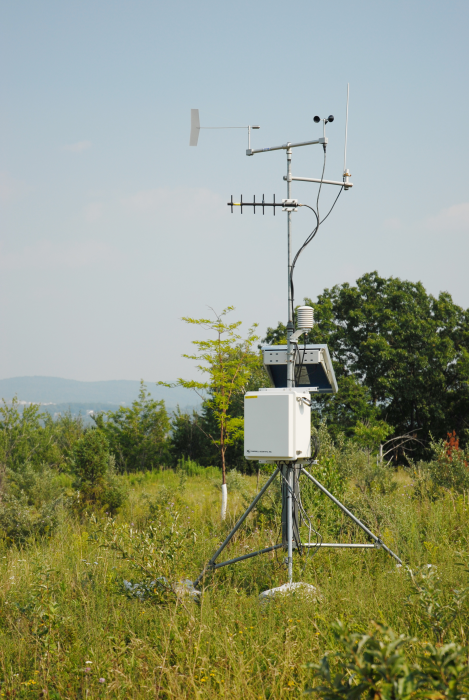



埋立地には、臭気制御から地下水の質に至るまで、多くの環境上の課題があります。現場の状況を継続的かつ正確に監視することで、埋立地管理者がこれらの課題に対処する際に使用できるデータが得られます。
ペンシルバニア州の埋立地管理者は、地域社会への影響を最小限に抑えながら業務を最適化するために気象データを収集して分析しています。Campbell Scientific のコンサルタント兼インテグレーターである Ambient Air Quality Service (AAQS) は、ペンシルバニア州に複数の埋立地監視場所を設置し、維持しています。
埋立地モニタリング
AAQS は、ペンシルベニア州テイラーの Waste Management Alliance 埋立地に 3 か所の気象モニタリング場所を設置しました。これらの施設では、AC 電源と太陽光発電、Campbell Scientific の CR510 データロガー、10 フィートおよび 20 フィートの三脚、RF401 無線機、風速、風向、温度、相対湿度、気圧を測定するセンサーを使用しています。SRM-5A 短距離モデムにより、無線機とデータロガーからベース ステーション コンピューターまでの距離が延長されます。
AAQS はウェイン タウンシップの埋立地で、風向計に接続された CR200 データロガーを設置し、ミスト システムを制御して、風が特定の方向から吹いているときのみ稼働するようにしました。これにより、悪臭が抑えられ、高価な消臭剤が節約されます。
埋立地の運用にデータを使用する
ペンシルベニア州の規制では風のデータのみが求められていますが、埋立地では風の冷え込みや熱指数を計算するための温度と相対湿度、廃水処理を管理するための降水量データ、フレアの分析と操作に役立つ気圧も収集しています。
埋立地ではガスを燃やすためにフレアが稼働しています。フレアには CR1000 データロガーとセンサーが追加され、温度、流量、酸素を監視しています。
データの収集と表示
ペンシルバニア州の埋立地で収集されたデータの多くは、スタッフ、州の規制当局、およびコミュニティがインターネットで利用できます。LoggerNet ソフトウェアは、データロガーからデータを収集し、LoggerNet Split を使用して日次レポートを生成し、日次レポートと現在のデータを AAQS が開発した Web サイトにアップロードし、48 時間の傾向グラフを Web 上に表示します。
AAQS は、強風や大雨の際に埋立地の職員に通知する LoggerNet ベースの警報プログラムも開発しました。警報は携帯電話または電子メールで埋立地の職員に送信されます。
一部の埋立地では、AAQS が開発した LoggerNet プログラムを使用して、最近収集された風の値の風の回廊を表示しています。このプログラムにより、臭気苦情の発生中または発生前には埋立地を横切る風がなかったため、その地域で検出された臭気は埋立地から発生したものではないことが証明されました。
埋立地の管理者は、住民に迷惑がかかった後に対処するよりも、環境問題を予防することを望んでいます。環境変数の継続的な監視は、この取り組みの重要な部分となります。